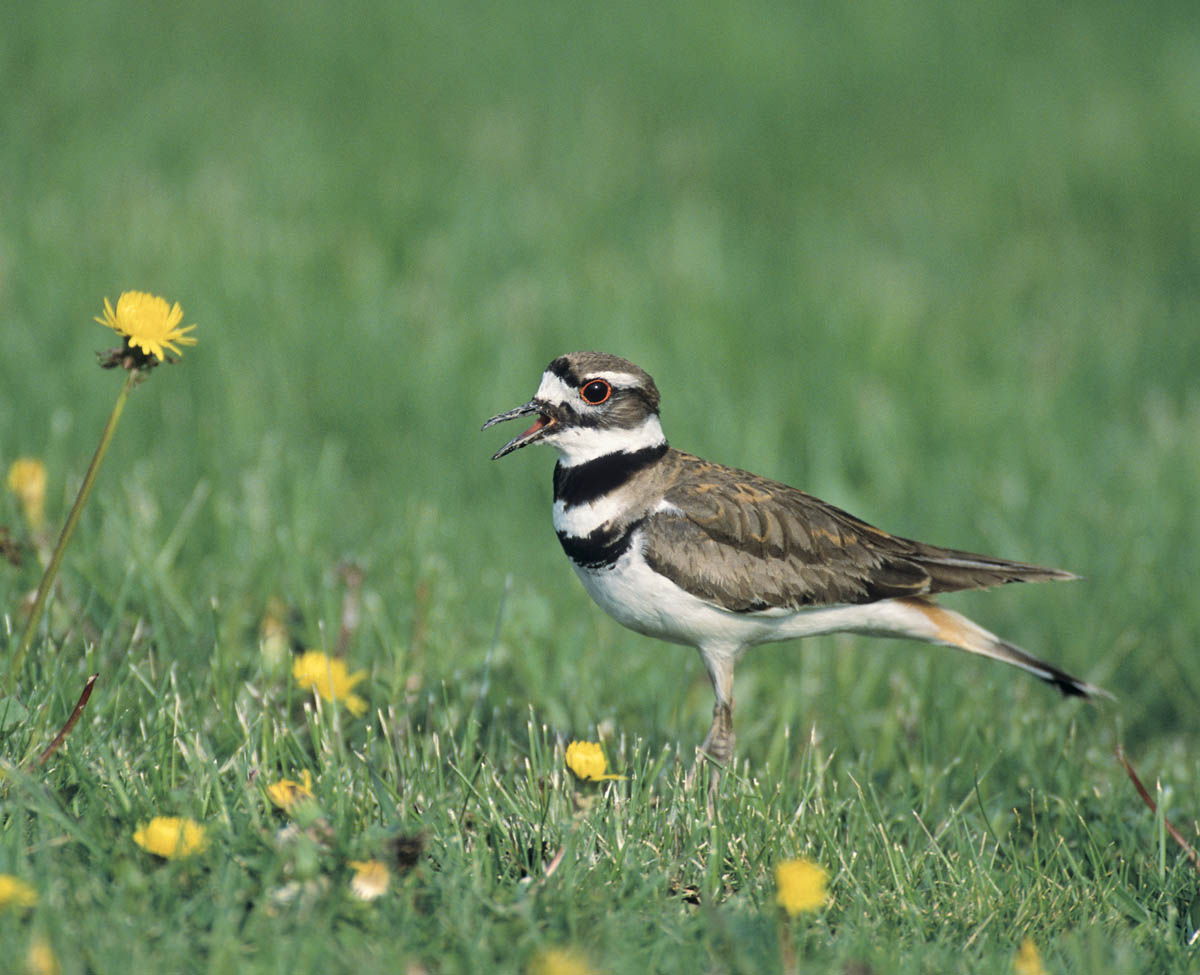
Killdeer adult
Eggs and tiny chicks are always vulnerable, but none seem more defenseless to our eyes than those out in the open on the ground, with no sheltering nest or nearby vegetation to protect them. Yet ground-nesting birds have strategies to overcome many of the dangers. Killdeer have so successfully adapted to modern farms, towns, and cities that they’re probably more common today than when Columbus landed.

Killdeer adult
Killdeer are fairly tolerant of people. Before urbanization, they were most often found on mudflats, short-grass prairies and meadows, and spits of land jutting into waterways, but they now also frequent construction sites, gravel roads and driveways, rock-ballasted rooftops, lawns, pastures, golf courses, and sporting fields. They usually lay their eggs on bare ground where they’ll be camouflaged against soil and gravel.
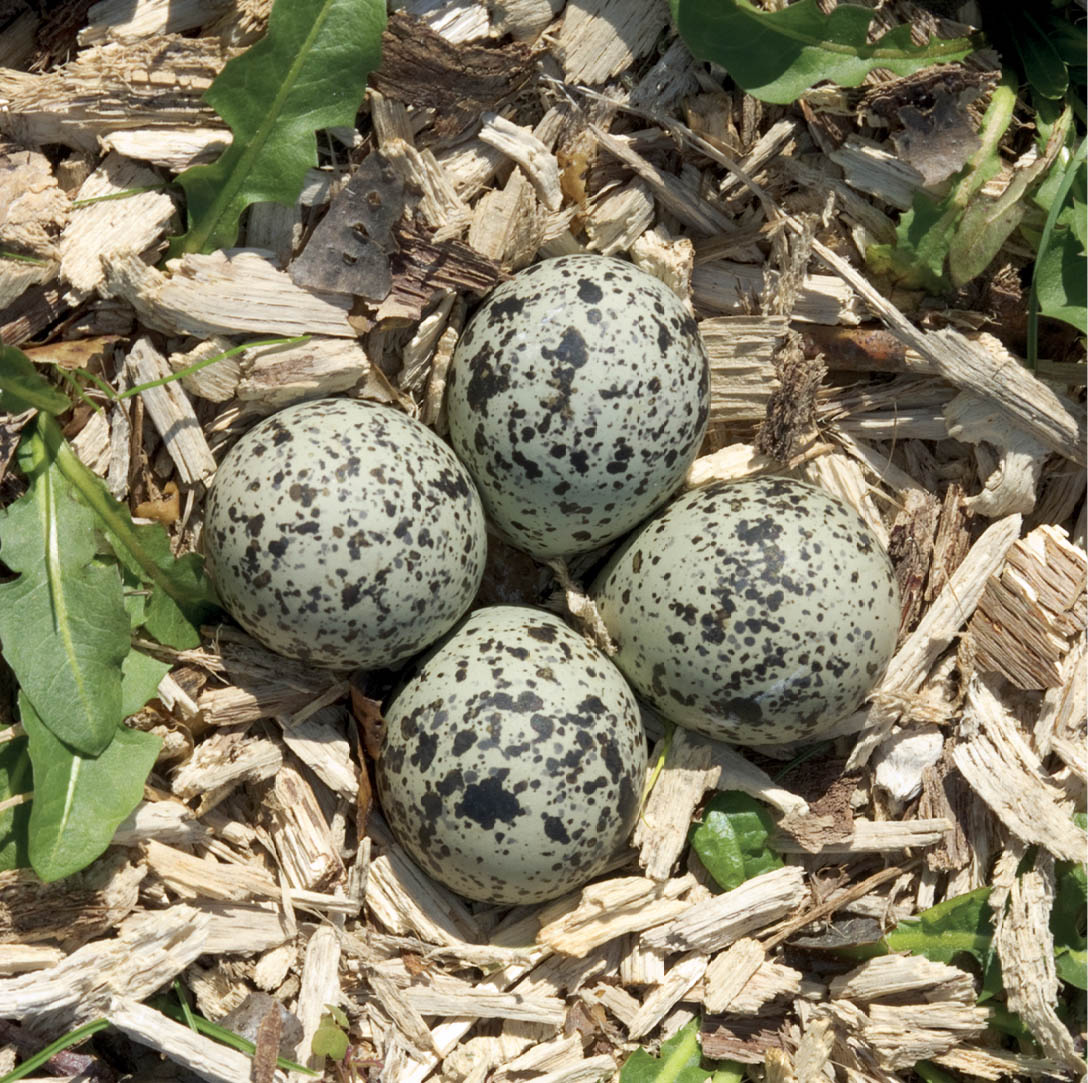
A Killdeer nest with four eggs, well camouflaged among woodchips on a school playing field. The four eggs are usually situated with the pointed ends together in the center. The parents don’t seem to turn them.
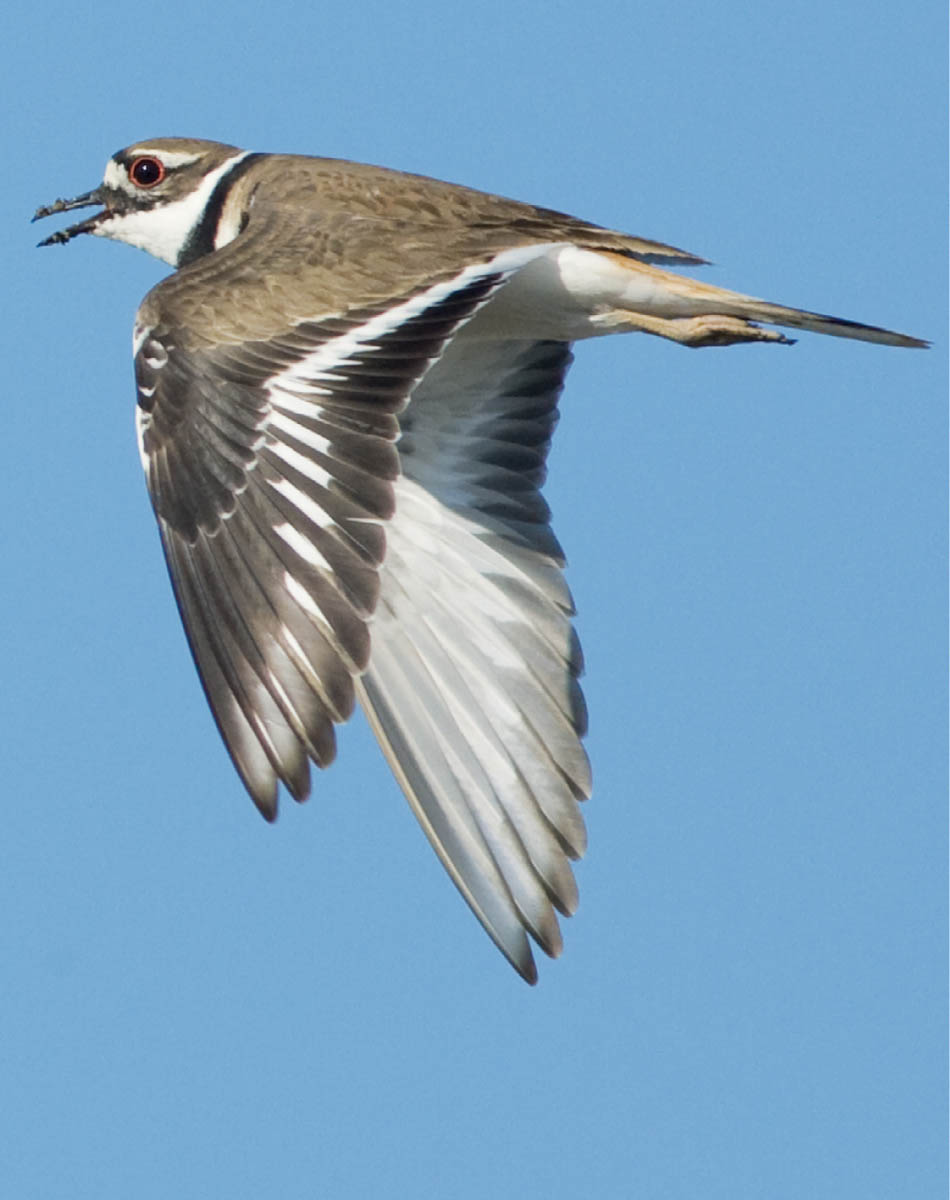
Early in spring, the Killdeer’s plaintive call, kill-deer, can be heard from far off as the displaying male circles high above his nesting area. Killdeer nest in open habitats with very short or sparse vegetation, often with rocks or pebbles, and frequently near humans. Despite being shorebirds, they are often found far from water.
Unattached migratory Killdeer form pair bonds on their nesting grounds when they arrive in spring. Mated pairs from the previous year sometimes winter together (especially in the South, in non-migratory populations) and arrive together at their nesting site.
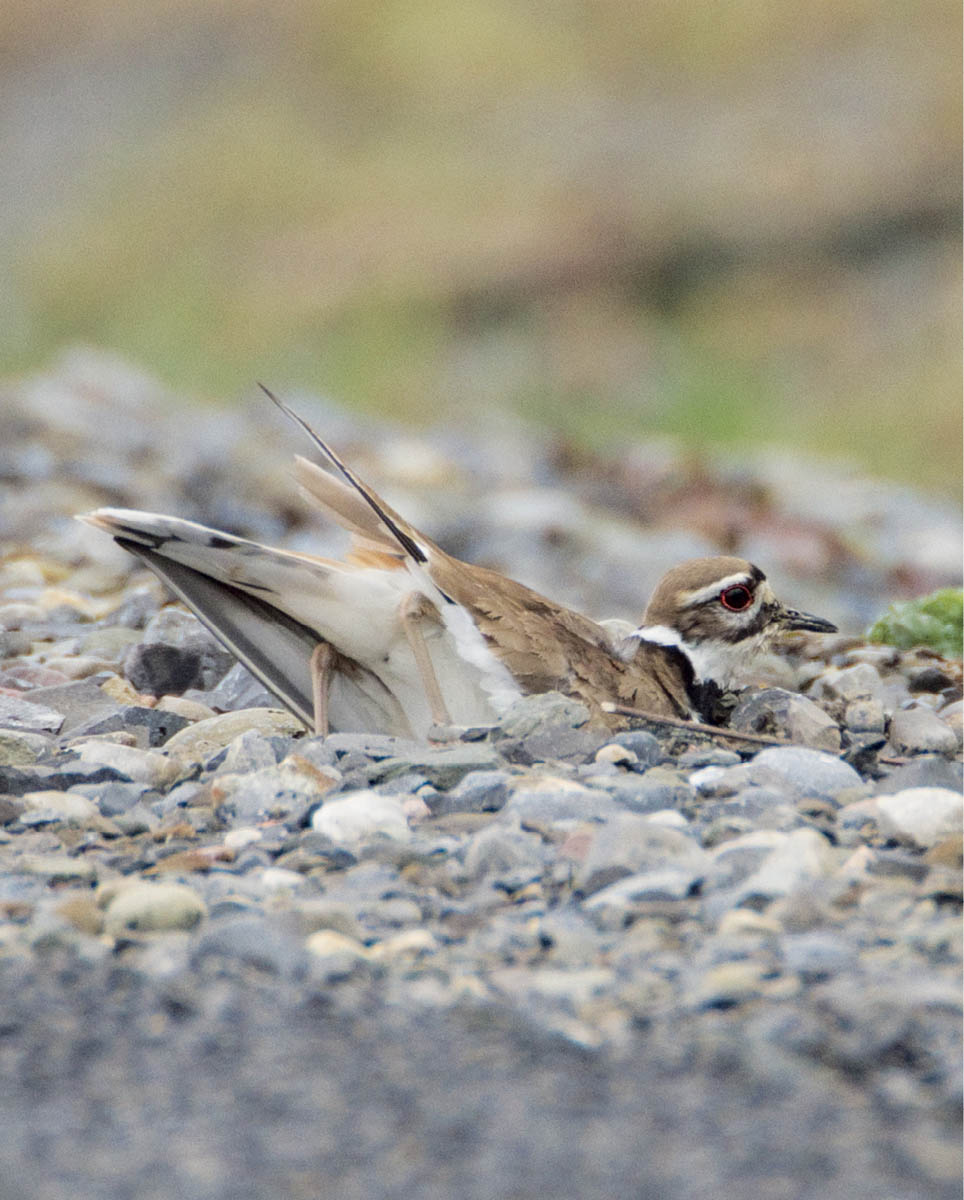
To make its nest scrape, a Killdeer squats and shoves backwards with one foot after the other, creating a shallow circular depression. The male starts a number of scrapes, usually in slightly higher spots than the surroundings; the pair selects one for the nest.
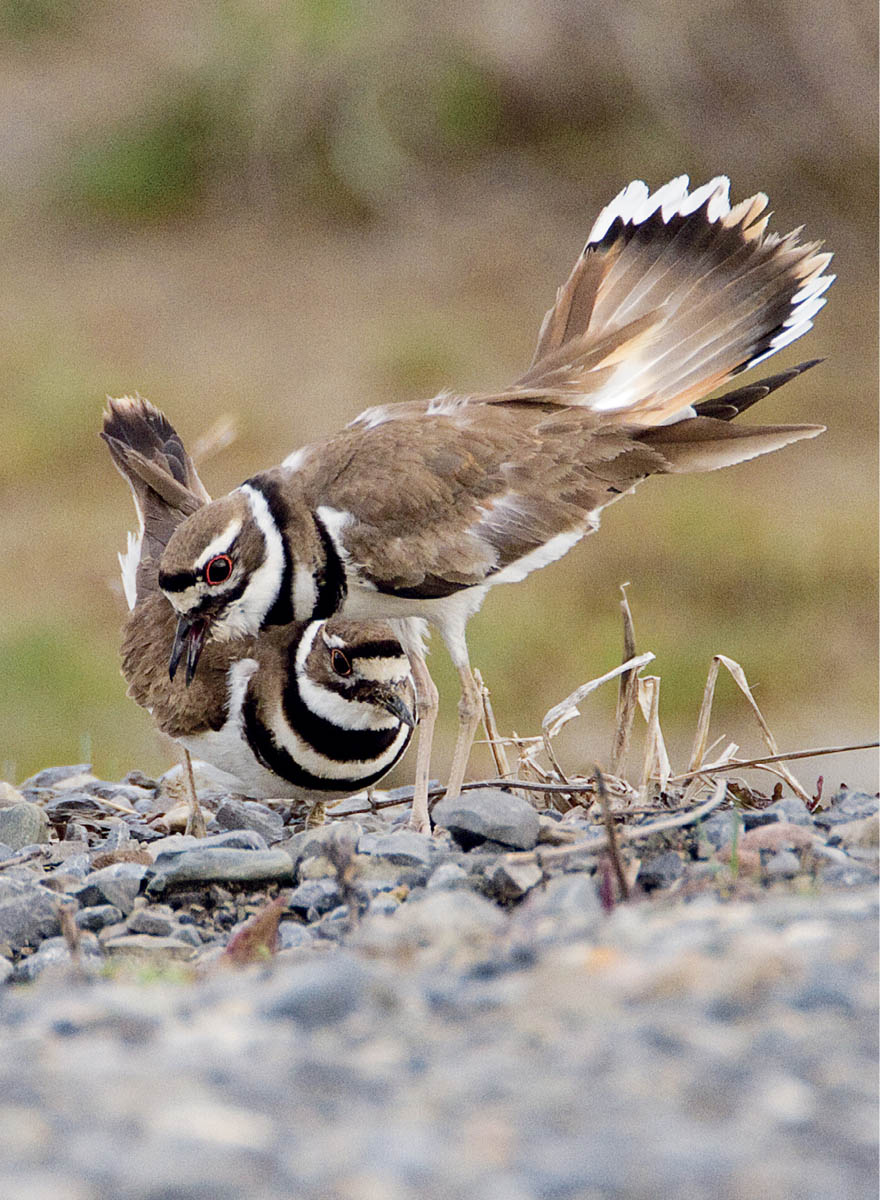
During the scrape ceremony the male Killdeer trills to invite the female to inspect the scrape he made. He bows, tail spread, as she approaches and settles onto the scrape. Then he picks up small stones and tosses them over his shoulder. The pair changes places, repeats the sequence (sometimes many times), and then copulates.
The main courtship display, the scrape ceremony, helps the pair find a suitable nest site and is followed by mating. Unlike many birds, established pairs of Killdeer may copulate in winter and at other times when fertilization isn’t at issue, and well after incubation has begun.
The nest is little more than a simple scrape in the ground when the first egg is laid. Over time, the birds add light-colored pebbles, bits of twigs, shell or bone fragments, weed stems, or tiny human-made objects, possibly to camouflage the nest further or to cool it off. The little pebbles also effectively raise the nest, making it less prone to flooding in heavy rain.
Incubation lasts for 22 to 29 days, depending on weather and how often disturbances take the parents off the nest. On hot days, the parents may soak their belly feathers in water to moisten and cool the eggs; in intense heat they may stand above and shade the eggs without incubating them.
Many animals eat Killdeer eggs and chicks, including snakes, opossums, raccoons, skunks, weasels, cats, foxes, coyotes, dogs, gulls, owls, kestrels, magpies, crows, ravens, and shrikes. Killdeer parents use two strategies to protect their young.

A Killdeer tries to distract a predator away from its nest by feigning injury: flapping one wing while leaning to the side and calling plaintively.
False brooding. When a nesting Killdeer notices a predator, it quietly runs from the nest and may settle into another scrape, perhaps one created during courtship, as if incubating eggs or brooding chicks there.
Distraction displays. If the predator approaches the nest, the Killdeer performs distraction displays, especially an injury-feigning display. Appearing injured and easy to catch, the bird usually draws the pursuer away from eggs or chicks and then flies safely off.
Predation isn’t the only way a mammal can destroy a Killdeer’s young: large herbivores such as deer, cows, and bison may unwittingly step on them. Killdeer use their ungulate display to deal with this danger, staying on the nest until it seems threatened, and then rushing toward the animal while giving loud screams. At least one nineteenth century observer noted a Killdeer effectively parting a stampeding bison herd down the middle with this display.
Inside the shell the chick starts peeping and may pip the egg up to three days before hatching. All four chicks hatch within eight hours. The parents lead them off the nest to feeding areas several hours after hatching; if they hatch late in the day or evening, they’ll remain in the nest overnight.
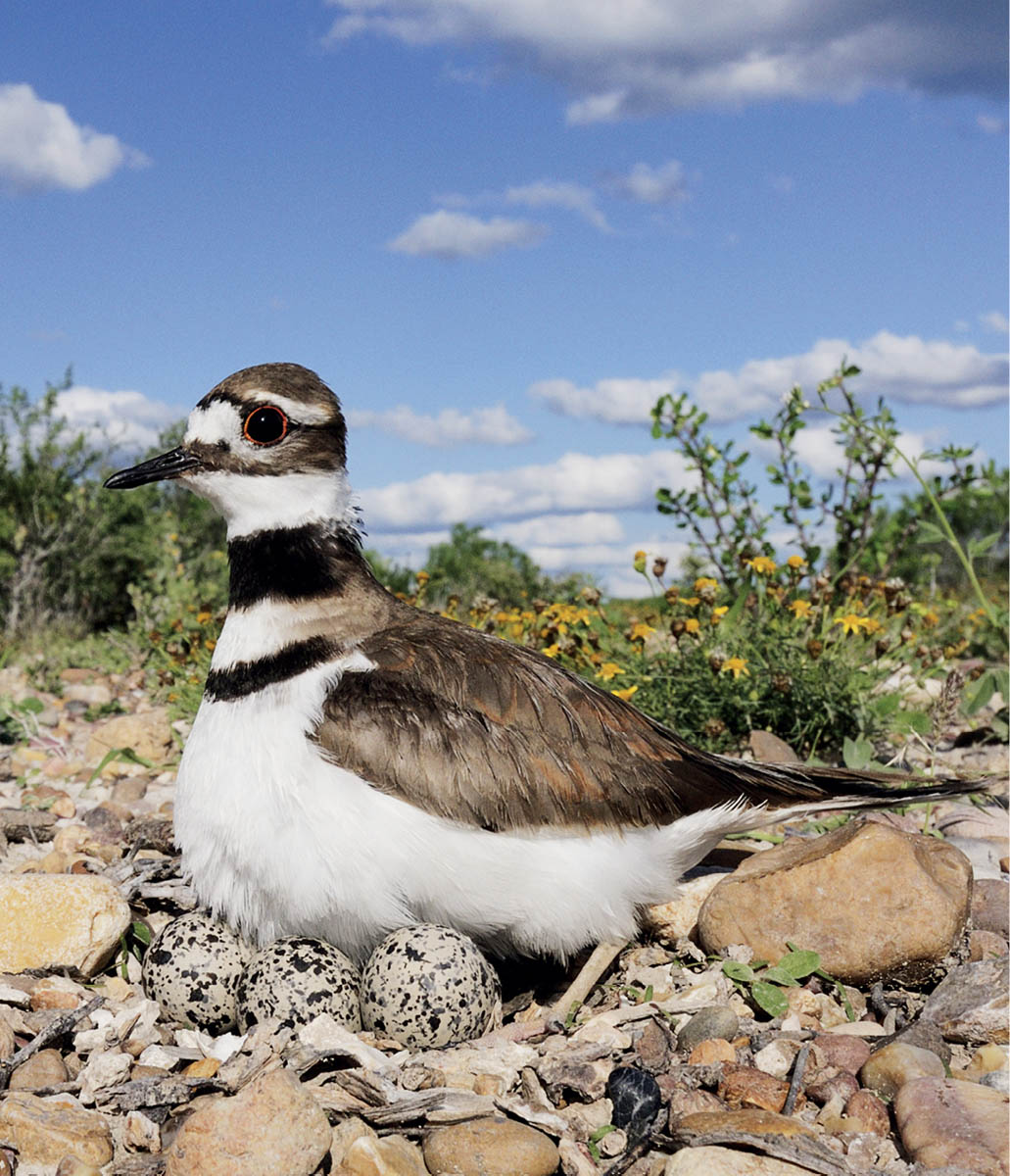
Settling onto its pebbly scrape, a Killdeer spreads its belly feathers and lays the bare skin of its brood patch against the eggs, transferring maximum heat from its body. The parents take turns incubating the eggs. The male usually takes night duty.
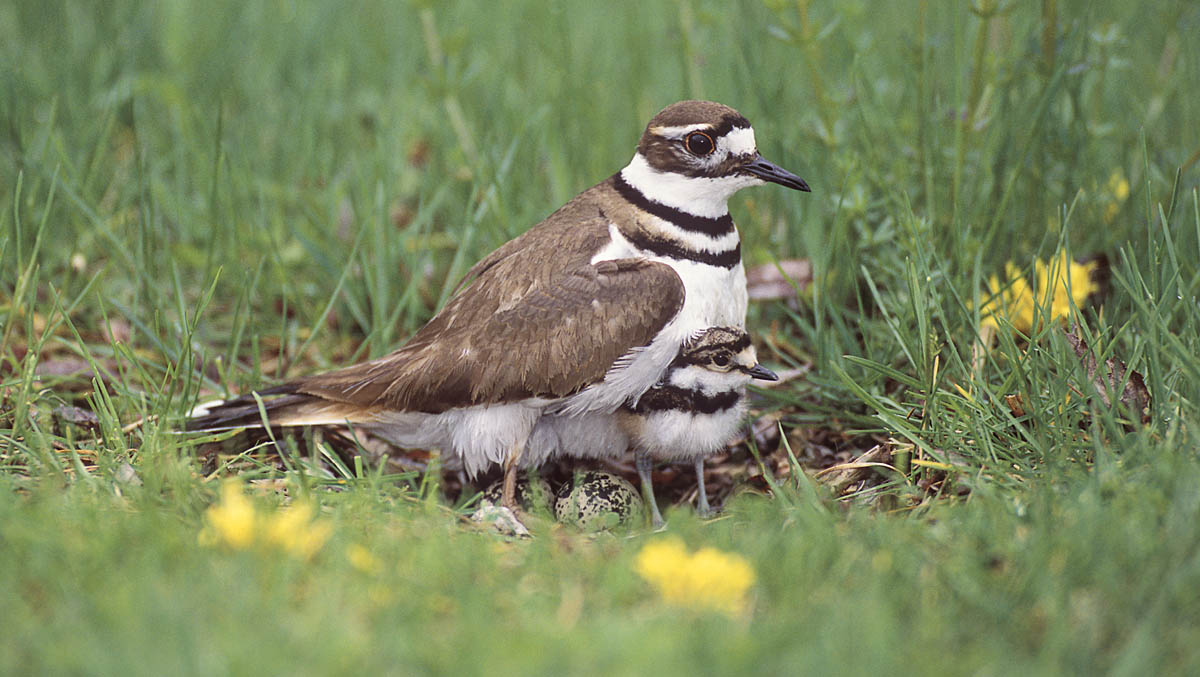
A newly hatched Killdeer chick snuggles up to its parent. Once all the chicks have hatched (usually in less than eight hours), their parents lead them away from the nest to feeding areas. They usually do not return to the nest.
Chicks from rooftop nests must get down to the ground to reach food. In one case where Killdeer nested on a Mississippi rooftop, the chicks invariably fell into a rain gutter surrounding the roof soon after leaving the nest. A parent on the ground called into the downspout, and the chicks, hearing it, leaped into the top of the downspout, sliding down to the parent below.
Newly hatched Killdeer chicks are downy and active as soon as they dry off, but cannot effectively thermoregulate, or control their own body temperature, at first. Both parents brood them for the first three days after hatching and after that in chilly or rainy weather; they also shade the chicks in the heat.
Killdeer do not feed their chicks but instead lead them to feeding areas to pick up small invertebrates for themselves. Their thick, fuzzy natal down persists among normal feathers for weeks or months after the bird is wearing its basic plumage.
Young Killdeer fly when about three to four weeks old. They remain with their parents at least until then, but chicks in second and third nestings can remain with their parents even longer — in one study, for 81 days.
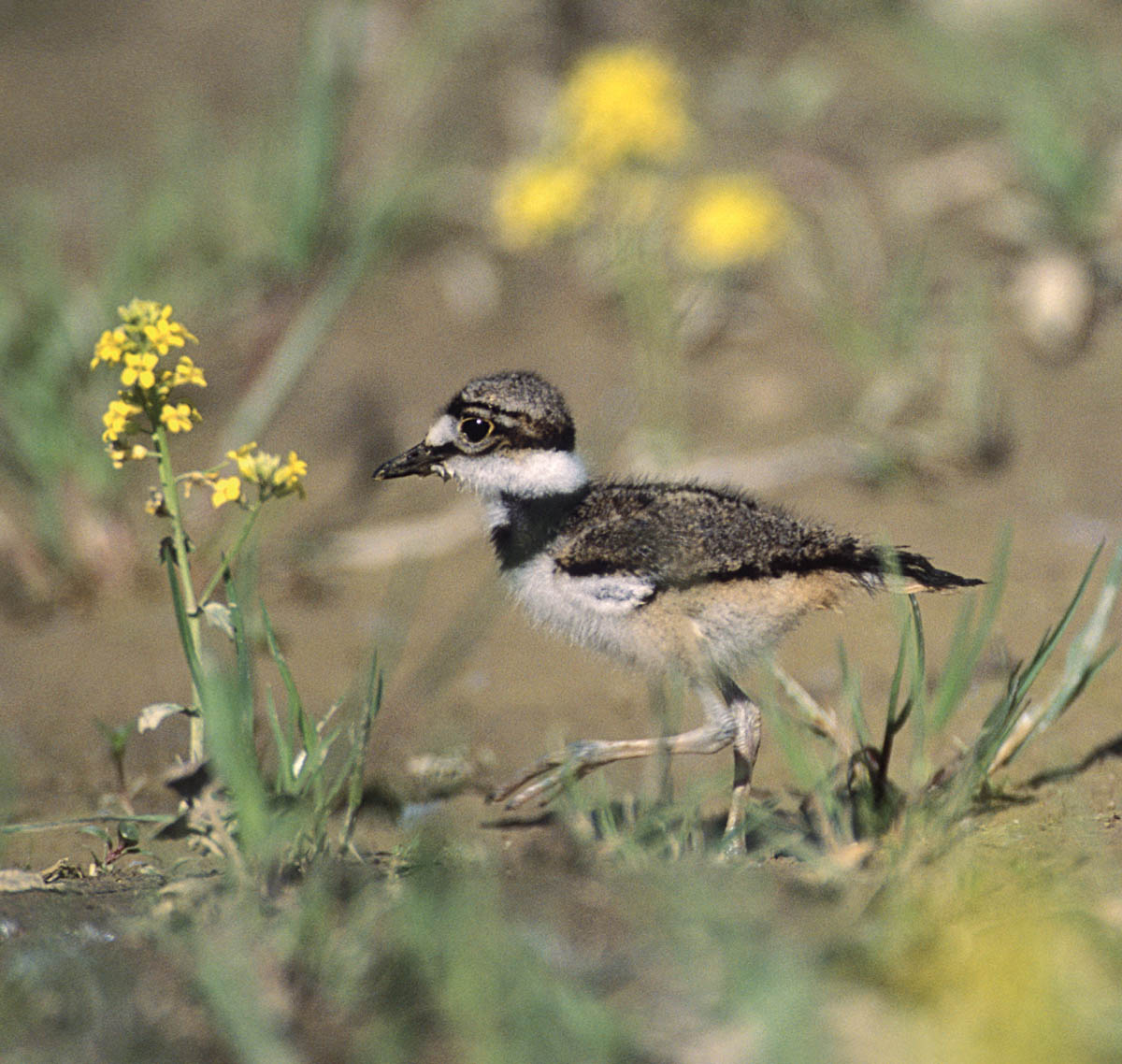
This Killdeer chick, about a week old, will remain closely associated with its parents and siblings at least until it can fly, at between 20 and 30 days of age. Some Killdeer families remain together much longer.